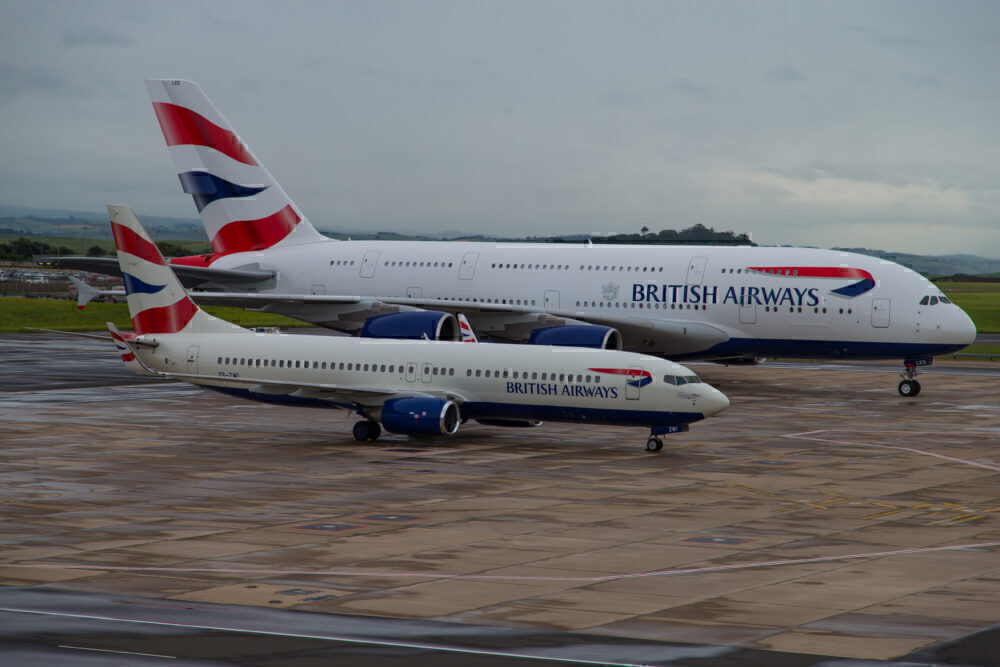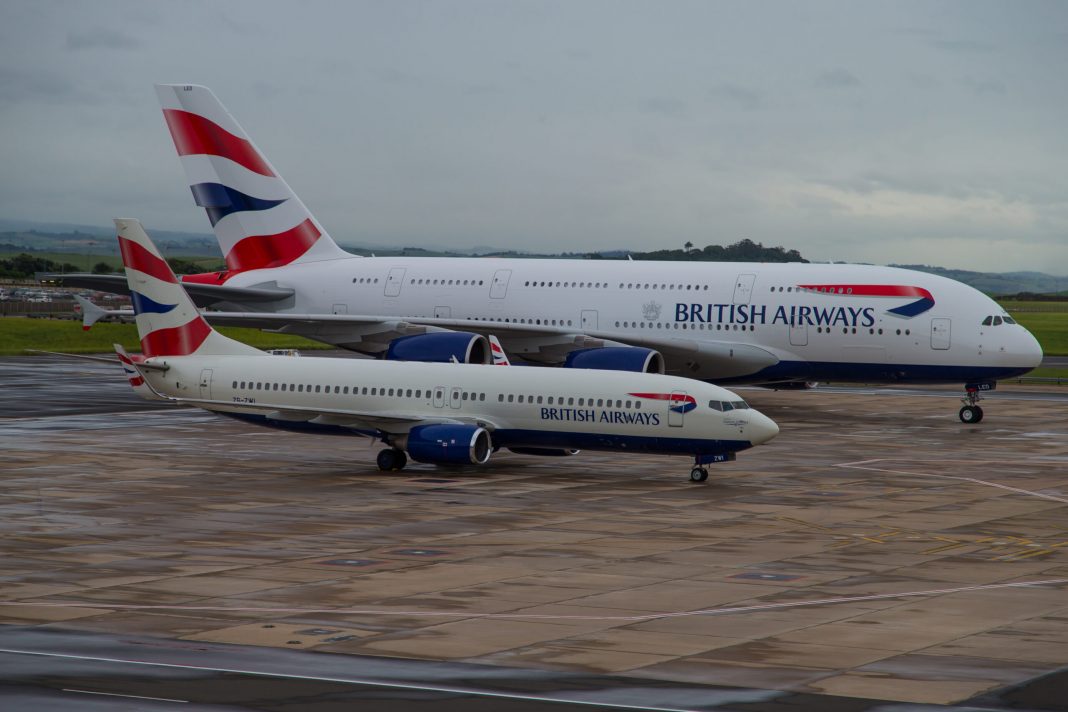While certain aircraft may not compete for the same markets as one another, they can still prove fascinating to compare and contrast. The Airbus A380 ‘superjumbo’ and Boeing 737 are a pair of aircraft that, visually, could hardly be more different. But how else do these types contrast, beyond surface-level aesthetic comparisons?

Little vs large
Both of these aircraft have already been the subject of such comparisons with vastly different airliners in terms of size. Last month, Simple Flying contrasted the infamous Boeing 737 MAX 7 against the next-generation 777X, as well as the Airbus A380 with the A320 family.
Indeed, there is also a lot of scope for comparison within the existing 737 family. Several generations of this type have been produced since it first flew in 1967. These are listed with their respective first flights in brackets as follows:
- Original – 737-100 (April 1967) & -200 (August 1967).
- Classic – 737-300 (February 1984), -400 (February 1988) & -500 (June 1989).
- Next Generation – 737-600 (January 1998), -700 (February 1997), -800 (July 1997) & -900 (August 2000).
- MAX – 737 MAX 7 (March 2018), MAX 8 (January 2016), MAX 9 (April 2017) & MAX 10 (yet to fly, first taxi test in March 2020).

Several of these versions also have sub-variants, such as the 737-900ER (‘Extended Range’). Meanwhile, the Airbus A380 only operates one variant, the -800 (although others have been proposed over the years). Correspondingly, we will compare it to the -800 variant of the 737, which also happens to be the family’s best-selling version.
Stay informed: Sign up for our daily aviation news digest.
Aircraft specifications
Let’s see how the two aircraft compare side-by-side across various technical specifications. In each of the following comparisons, the figure for the Airbus A380-800 will be listed first, followed by that of the Boeing 737-800.
- Length – 73 m vs 39.5 m.
- Wingspan – 79.8 m vs 35.8 m.
- Height – 24.1 m vs 12.5 m.
- Wing area – 845 square meters vs 125 square meters.
- Range – 15,000 km (8,100 NM) vs 5,425 km (2,930 NM).
- Cruising speed – Mach 0.85 (1,050 km/h / 565 knots) vs Mach 0.785 (970 km/h / 525 knots).
- Typical capacity – 525 passengers (three-class) vs 162 passengers (two-class).
- Seats abreast (economy) – 10 (3-4-3 configuration) vs 6 (3-3 configuration).
- Maximum takeoff weight – 548,000 kg (1,208,000 lbs) vs 79,000 kg (174,000 lbs).
- Cost – $445.6 million vs $106.1 million.

Contrasting commercial success
The latter of these comparisons is particularly interesting. While the A380’s cost is listed at $445.6 million, its current market value is far lower. Indeed, aviation data analysis company Cirium has found that:
“Market values range between $77 million for a 2005-build ‘half-life’ aircraft and $276 million for a new 2019-build aircraft in ‘full-life’ condition.”
Furthermore, Cirium projects that, by 2030, the cost of an A380 airframe will drop to as little as just $1 million. This is because, in the current climate, the superjumbo has become rather obsolete. Airlines are moving away from the hub-to-hub model that it demands, and COVID-19 has seen passenger numbers to fall drastically worldwide. Airlines such as Lufthansa and Qantas have stored their A380s, with Air France even retiring the type altogether.

The cost of the A380 is hard to justify, with operators needing flights to be well-filled in order to break even. As such, few airlines took the financial gamble to order the type, and only 243 have rolled off the Airbus production line. Just eight remain on order.
In huge contrast, the Boeing 737 family has gone on to become the second-best-selling commercial aircraft of all time. Almost 10,500 737s across all variants have been delivered to customers, with more than 4,000 on order.
As of October 2020, the 737-800 was by far the most popular variant, with 4,989 deliveries since 1998 representing almost half of the figure for the entire family. While the Airbus A380 has proved something of a white elephant in the aviation industry, Boeing has, in the form of the 737, found itself a popular and versatile short-to-medium-haul workhorse that should continue to grace the world’s skies for the foreseeable future.
[ad_2]
Source link


